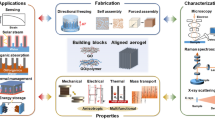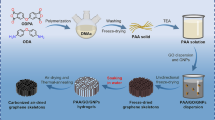Abstract
We carried out molecular dynamics simulations to study the effects of environmental moisture and functional groups on the sliding adhesive behaviour of graphene steps at the atomic scale. Environmental water plays a dual role in separating interfaces and additional passivation during the sliding process. For a diamond tip, functionalization of graphene steps exhibits different chemical properties. Hydroxyl passivation graphene step can destroy interfacial water layers due to high chemical activity and participation in forming a filter, thereby significantly enhancing interfacial contact area and interfacial bond strength. By contrast, the graphene step passivated by hydrogen atoms has less influence on the interfacial water layers, and no apparent adhesion is observed. Besides, the presence of graphene step significantly weakens the wear resistance of graphene sheets. And different environmental conditions and functional groups weaken it to various degrees. Generally speaking, the abrasion resistance of graphene sheets in a water environment is better than that in a vacuum environment. Excluding the influence of environmental moisture, wear resistance of graphene step edges with hydrogen passivation is better than that with hydroxyl passivation. This work provides new and further insights into the process and mechanism of sliding adhesive behaviour of graphene steps.







Similar content being viewed by others
References
Klemenz, A., Pastewka, L., Balakrishna, S.G., Caron, A., Bennewitz, R., Moseler, M.: Atomic scale mechanisms of friction reduction and wear protection by graphene. Nano Lett 14, 7145–7152 (2014). https://doi.org/10.1021/nl5037403
Si, C., Sun, Z., Liu, F.: Strain engineering of graphene: a review. Nanoscale 8, 3207–3217 (2016). https://doi.org/10.1039/c5nr07755a
Feng, X., Kwon, S., Park, J.Y., Salmeron, M.: Superlubric sliding of graphene nanoflakes on graphene. ACS Nano 7, 1718 (2013). https://doi.org/10.1021/nn305722d
Lang, H.J., Peng, Y.T., Zeng, X.Z., Cao, X.A., Liu, L., Zou, K.: Effect of relative humidity on the frictional properties of graphene at atomic-scale steps. Carbon 137, 519–526 (2018). https://doi.org/10.1016/j.carbon.2018.05.069
Ye, Z.J., Otero-de-la-Roza, A., Johnson, E.R., Martini, A.: Effect of tip shape on atomic-friction at graphite step edges. Appl. Phys. Lett. 103, 030801–035069 (2013). https://doi.org/10.1063/1.4818258
Gugliuzza, A., Politano, A., Drioli, E.: The advent of graphene and other two-dimensional materials in membrane science and technology. Curr. Opin. Chem. Eng. 16, 78–85 (2017). https://doi.org/10.1016/j.coche.2017.03.003
Levita, G., Restuccia, P., Righi, M.C.: Graphene and MoS2 interacting with water: a comparison by ab initio calculations. Carbon 107, 878–884 (2016). https://doi.org/10.1016/j.carbon.2016.06.072
Hunley, D.P., Flynn, T.J., Dodson, T., Sundararajan, A., Boland, M.J., Strachan, D.R.: Friction, adhesion, and elasticity of graphene edges. Phys. Rev. B 87, 8004 (2013). https://doi.org/10.1103/PhysRevB.87.035417
Lang, H.J., Peng, Y.T., Zeng, X.Z.: Effect of interlayer bonding strength and bending stiffness on 2-dimensional materials’ frictional properties at atomic-scale steps. Appl. Surf. Sci. 411, 261–270 (2017). https://doi.org/10.1016/j.apsusc.2017.03.188
Ye, Z.J., Martini, A.: Atomic friction at exposed and buried graphite step edges: experiments and simulations. Appl. Phys. Lett. 106, 1068–3819 (2015). https://doi.org/10.1063/1.4922485
Egberts, P., Liu, Z., Dong, X.Z., et al.: Environmental dependence of atomic-scale friction at graphite surface steps. Phys. Rev. B Condens. Matter Mater. Phy. (2013). https://doi.org/10.1103/PhysRevB.88.035409
Lee, H., Kwon, S.: Internal and external atomic steps in graphite exhibit dramatically different physical and chemical properties. Acs Nano 9, 3814 (2015). https://doi.org/10.1021/nn506755p
Tsounis, C., Lu, X., Bedford, N.M., Subhash, B., Han, Z.: Valence alignment of mixed Ni-Fe hydroxide electrocatalysts through preferential templating on graphene edges for enhanced oxygen evolution[J]. ACS Nano 14, 11327–11340 (2020). https://doi.org/10.1021/acsnano.0c03380
Vasic, B., Gajic, R., Stankovic, I., et al.: Wear properties of graphene edges probed by atomic force microscopy based lateral manipulation. Carbon: Int. J. Sponsored Am. Carbon Soc. 107, 723–732 (2016). https://doi.org/10.1016/j.carbon.2016.06.073
Qi, Y.Z., Liu, J., Dong, Y.L., Feng, X.Q., Li, Q.Y.: Impacts of environments on nanoscale wear behavior of graphene: edge passivation vs. substrate pinning. Carbon 139, 59–66 (2018). https://doi.org/10.1016/j.carbon.2018.06.029
Neek-Amal, M., Peeters, F.M.: Nanoindentation of a circular sheet of bilayer graphene. Phys. Rev. B: Condens. Matter 81, 235421 (2011). https://doi.org/10.1103/PhysRevB.81.235421
Levita, G., Righi, M.C.: Effects of water intercalation and tribochemistry on MoS2 lubricity: an Ab initio molecular dynamics investigation. ChemPhysChem (2017). https://doi.org/10.1002/cphc.201601143
Gao, G., Ca Nnara, R.J., Ca Rpick, R.W., Harrison, J.A.: Atomic-scale friction on diamond: a comparison of different sliding directions on (001) and (111) surfaces using MD and AFM. Langmuir 23, 5394–5405 (2007). https://doi.org/10.1021/la062254p
Dong, Y., Li, Q., Martini, A.: Molecular dynamics simulation of atomic friction: a review and guide. J. Vac. Sci. Technol., A: Vac., Surf. Films 31, 030801 (2013). https://doi.org/10.1116/1.4794357
He, M., Szuchmacher Blum, A., Aston, D.E., Buenviaje, C., Overney, R.M., Luginbühl, R.: Critical phenomena of water bridges in nanoasperity contacts. J. Chem. Phys. 114, 1355–1360 (2001). https://doi.org/10.1063/1.1331298
Kajita, S., Righi, M.C.: A fundamental mechanism for carbon-film lubricity identified by means of ab initio molecular dynamics. Carbon 103, 193–199 (2016). https://doi.org/10.1016/j.carbon.2016.02.078
Restuccia, P., Ferrario, M., Righi, M.C.: Monitoring water and oxygen splitting at graphene edges and folds: insights into the lubricity of graphitic materials. Carbon 156, 93–103 (2019). https://doi.org/10.1016/j.carbon.2019.09.040
Carlos, F., Sanz-Navarro, Per-Olof, De, S., et al.: Molecular dynamics simulations of the interactions between platinum clusters and carbon platelets. J. Phys. Chem. A 112, 1392–1402 (2008). https://doi.org/10.1021/jp074806y
Plimpton, S.: Fast parallel algorithms for short-range molecular dynamics. J. Comput. Phys. 117, 1–19 (1995). https://doi.org/10.1006/jcph.1995.1039
Nielson, K.D., Duin, A.V., Oxgaard, J., Deng, W.Q., Goddard, W.A.: Development of the ReaxFF reactive force field for describing transition metal catalyzed reactions, with application to the initial stages of the catalytic formation of carbon nanotubes. J. Phys. Chem. A 109, 493–499 (2005). https://doi.org/10.1021/jp046244d
Rahaman, O., Van Duin, A.C.T., Goddard, W.A., Doren, D.J.: Development of a ReaxFF reactive force field for glycine and application to solvent effect and tautomerization. J. Phys. Chem. B 115, 249–261 (2011). https://doi.org/10.1021/jp108642r
Stoyanov, P., Chromik, R.R.: Scaling effects on materials tribology: from macro to micro scale. Materials 10, 550 (2017). https://doi.org/10.3390/ma10050550
Stifter, T., Marti, O., Bhushan, B.: Theoretical investigation of the distance dependence of capillary and van der Waals forces in scanning force microscopy. Physrevb 62, 13667–13673 (2000). https://doi.org/10.1103/PhysRevB.62.13667
Hasz, K., Ye, Z., Martini, A., Carpick, R.W.: Experiments and simulations of the humidity dependence of friction between nanoasperities and graphite: the role of interfacial contact quality. Phys. Rev. Mater. (2018). https://doi.org/10.1103/PhysRevMaterials.2.126001
Dey, P., Saha, S.K., Chakraborty, S.: Air-water meniscus shape in superhydrophobic triangular microgroove is dictated by a critical pressure under dynamic conditions. Phys. Fluids 31, 102004 (2019). https://doi.org/10.1063/1.5119412
Asay, D.B., de Boer, M.P., Kim, S.H.: Equilibrium vapor adsorption and capillary force: exact laplace-young equation solution and circular approximation approaches. J. Adhes. Sci. Technol. 24, 2363–2382 (2010). https://doi.org/10.1163/016942410X508271
Xiao, X., Qian, L.: Investigation of humidity-dependent capillary force. Langmuir 16, 8153–8158 (2000). https://doi.org/10.1021/la000770o
Wang, L., Duan, F.: Nanoscale wear mechanisms of few-layer graphene sheets induced by interfacial adhesion. Tribol. Int. 123, 266–272 (2018). https://doi.org/10.1016/j.triboint.2018.02.045
Zheng, F., Duan, F.: Atomistic mechanism of the weakened wear resistance of few-layer graphene induced by point defects. Tribol. Int. (2019). https://doi.org/10.1016/j.triboint.2019.01.035
Debnath, S., Sengupta, A., Raghavachari, K.: Eliminating systematic errors in DFT via connectivity-based hierarchy: accurate bond dissociation energies of biodiesel methyl esters. J. Phys. Chem. A (2019). https://doi.org/10.1021/acs.jpca.9b01478
Yoosefian, M., Ansarinik, Z., Etminan, N.: Density functional theory computational study on solvent effect, molecular conformations, energies and intramolecular hydrogen bond strength in different possible nano-conformers of acetaminophen. J. Mol. Liq. 213, 115–121 (2016). https://doi.org/10.1016/j.molliq.2015.10.060
Bai, L., Srikanth, N., Zhao, B., Liu, B., Liu, Z., Zhou, K.: Lubrication mechanisms of graphene for DLC films scratched by a diamond tip. J. Phys. D Appl. Phys. 49, 485302 (2016). https://doi.org/10.1088/0022-3727/49/48/485302
Funding
The project is supported by the National Natural Science Foundation of China (Grant No. 51775066).
Author information
Authors and Affiliations
Corresponding author
Additional information
Publisher's Note
Springer Nature remains neutral with regard to jurisdictional claims in published maps and institutional affiliations.
Supplementary Information
Below is the link to the electronic supplementary material.
Rights and permissions
About this article
Cite this article
Fu, H., Duan, F. Effects of Environmental Moisture and Functional Groups on the Sliding Adhesive Behaviour of Graphene Steps. Tribol Lett 69, 104 (2021). https://doi.org/10.1007/s11249-021-01481-3
Received:
Accepted:
Published:
DOI: https://doi.org/10.1007/s11249-021-01481-3




